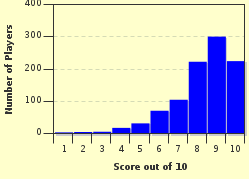Quiz Answer Key and Fun Facts
1. People drive across town for a chance to use a certain high-tech Coca-Cola machine. What does this particular machine do?
2. Many of the popular sodas were invented by men in what profession (US terminology)?
3. Carbonated drinks (those with carbon dioxide gas) are called colas, coke, soda, pop, or what else, depending where you live?
4. The Golden variety of this soft drink was enjoyed in Eastern Europe for centuries. It also comes in "dry" and is often used as a mixer.
5. What was the original "un-cola"?
6. Which early innovation radically changed and enlarged the market for soft drinks? Local markets were able to go global, in fact.
7. Michael Jackson was shooting a commercial when his hair caught fire. What product was he promoting?
8. There's a rumor, or is it true, that early Coca-Cola contained which type of drug?
9. The first marketed non-carbonated drinks appeared in the 17th century. They were composed of what?
10. What criticism of soft drinks resulted in the major producers pulling their drinks from U.S. schools in 2006?
Source: Author
Godwit
This quiz was reviewed by FunTrivia editor
Bruyere before going online.
Any errors found in FunTrivia content are routinely corrected through our feedback system.


